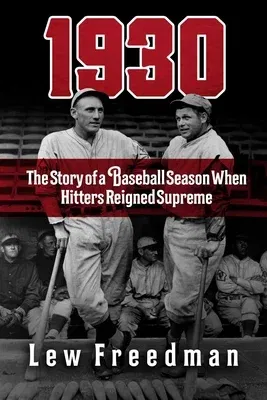The 1930 Major League baseball season was both marvelous and
horrendous, great for hitters, embarrassing for pitchers. In totality it
was just this side of insane as an outlier among all seasons.
Major League Baseball began with the founding of the National League in
1876. In the 145 seasons since then, one season stands out as unique for
the astounding nature of hitting: 1930.
A flipside of 1968's "Year of the Pitcher," when the great St. Louis
Cardinals Bob Gibson compiled a 1.12 earned run average and Detroit
Tigers Denny McLain won 31 games, the 1930 season was when the batters
reigned supreme. During this incredible season, more than one hundred
players batted .300, the entire National League averaged .300, ten
players hit 30 or more home runs, and some of the greatest individual
performances established all-time records. From New York Giants Bill
Terry's .401 average--the last National Leaguer to hit over .400--to the
NL-record 56 home runs and major league-record 192 runs batted in by
Chicago Cubs Hack Wilson, the 1930 season is a wild, sometimes
unbelievable, often wacky baseball story.
Breaking down the anomaly of the season and how each team fared, veteran
journalist Lew Freeman tells the story of a one-off year unlike any
other. While the greats stayed great, and though some pitchers did hold
their own--with seven winning 20 or more games, including 28 by
Philadelphia Athletics' Lefty Grove and 25 by Cleveland Indians' Wes
Ferrell--Freedman shares anecdotes about those players that excelled in
1930, and only 1930. More than ninety years later, 1930 offers insight
into a season that still stands the test of time for batting excellence.

